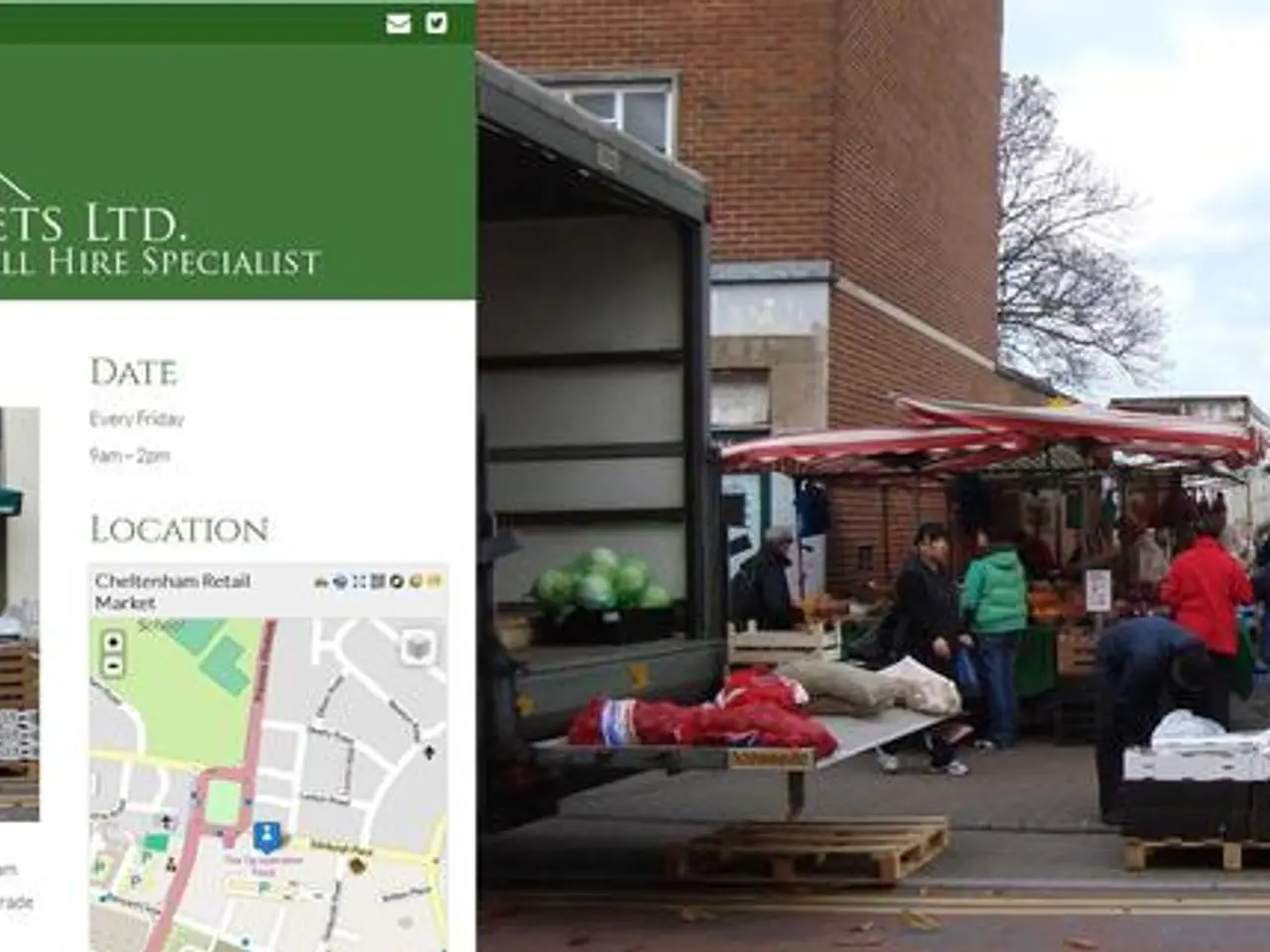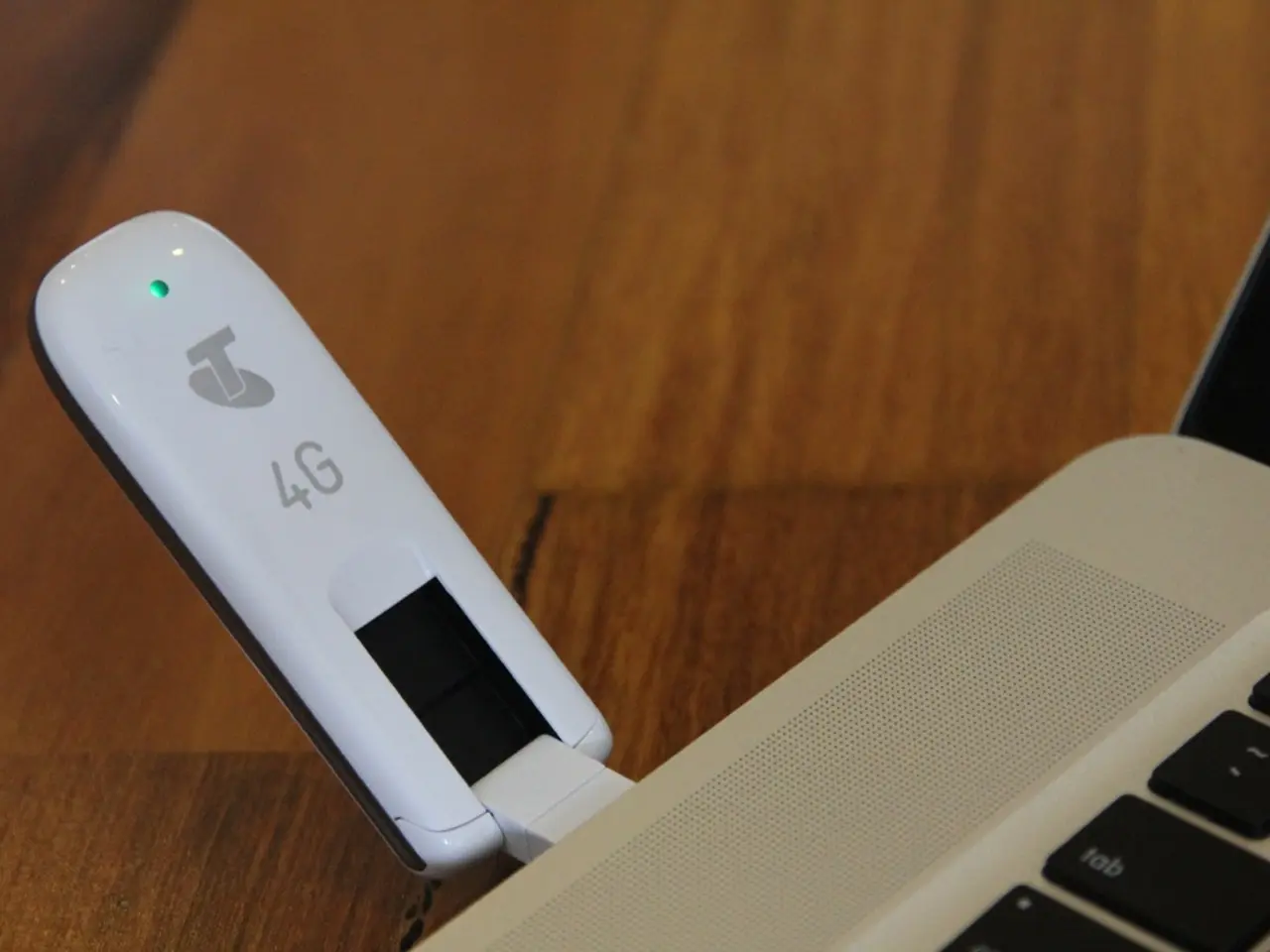Ukraine gains access to Starlink's direct-to-cellular satellite service, making it one of the initial nations to benefit from this innovation.
Starlink, the satellite internet company, is making waves in the telecommunications industry with its new Direct-to-Cell (D2C) satellite service. This innovative technology is designed to improve mobile coverage in rural and remote areas, enabling standard smartphones to connect directly to Starlink satellites without the need for special hardware[1][2][3].
The service works by utilising a new generation of Starlink satellites equipped with cellular antennas and advanced technology such as phased-array antennas, custom silicon chips, and eNodeB modems. These satellites act as orbiting cell towers at an altitude of approximately 350 km, communicating directly with standard 4G LTE phones[2][4][5].
Currently, the service primarily supports text messaging (SMS, MMS, some messaging apps), including emergency texting to 911, and geolocation. The capability is expanding to include voice calls and data connectivity soon, with IoT services expected around late 2025 to early 2026, depending on carrier agreements and regulations[1][2][4].
Starlink has already partnered with major mobile operators, most notably T-Mobile in the United States, which integrates the satellite fallback service into some premium plans at no additional cost and offers it for a modest fee on other plans. Other carriers like Verizon and AT&T are expected to follow suit, generally at around $10/month per line[1][2]. Other countries are also progressing through similar partnerships with local telecoms[2][3].
The potential impact on mobile network operators (MNOs) and rural connectivity is considerable. For MNOs, the D2C service allows carriers to offer true ubiquitous coverage without the need for extensive terrestrial infrastructure investment, especially in hard-to-reach areas. It acts as a complementary layer to existing cellular networks, enhancing customer experience and emergency communication reliability[1][2][4].
In rural and remote areas, millions of people suffer from "dead zones" where traditional cell towers are not economically viable. Starlink’s service eliminates these dead zones across vast regions, providing a lifeline during natural disasters when ground infrastructure is compromised, and could dramatically close the digital divide by enabling basic mobile connectivity with standard devices[1][4].
However, there are some technical and user experience notes to consider. Users do not need new phones or hardware upgrades—compatible existing phones will automatically switch to satellite mode when out of cellular coverage. However, performance depends on a clear view of the sky, and indoor use is currently limited. Initial data speeds are limited but improving as the constellation grows beyond 7,600 satellites with plans for over 10,000 in orbit[1][4][5].
In conclusion, Starlink’s Direct-to-Cell service represents a transformative step for mobile network operators by extending coverage to previously unreachable areas with existing smartphones, promising near-global connectivity and substantial benefits for emergency services and rural communities. Its ongoing expansion and technological evolution over 2025 and beyond will determine its full impact on the global telecom ecosystem[1][2][4][5].
[1] https://www.starlink.com/direct-to-cell [2] https://www.techradar.com/news/starlinks-direct-to-cell-service-launches-in-the-us-for-sms-and-emergency-services [3] https://www.pcmag.com/news/starlink-direct-to-cell-service-makes-its-debut-in-zimbabwe [4] https://www.reuters.com/technology/starlink-direct-cell-service-aims-to-eliminate-rural-dead-zones-2022-05-24/ [5] https://www.engadget.com/starlink-direct-to-cell-service-launches-in-australia-and-new-zealand-022022
- The partnership between Starlink and major mobile operators, such as T-Mobile, offers rural communities an opportunity to access internet access through mobile devices, previously unavailable due to space-and-astronomy advancements in satellite technology.
- The Direct-to-Cell service is expected to enhance Science, Technology, and especially space-and-astronomy, as it utilizes cutting-edge technology like phased-array antennas, custom silicon chips, and eNodeB modems for satellite connectivity, potentially revolutionizing global telecom ecosystems.




